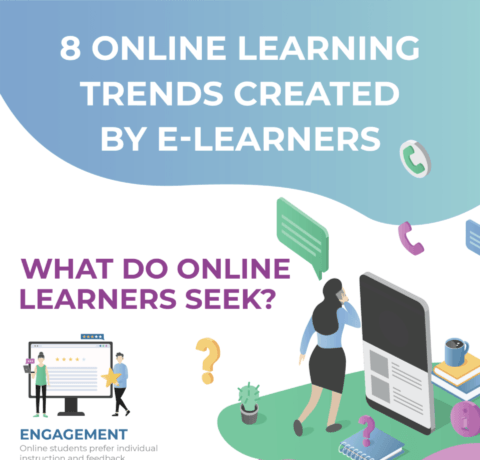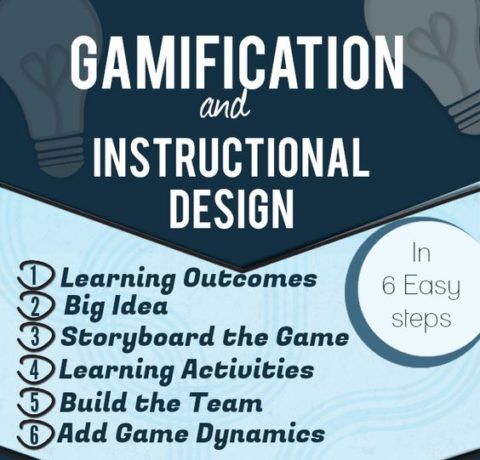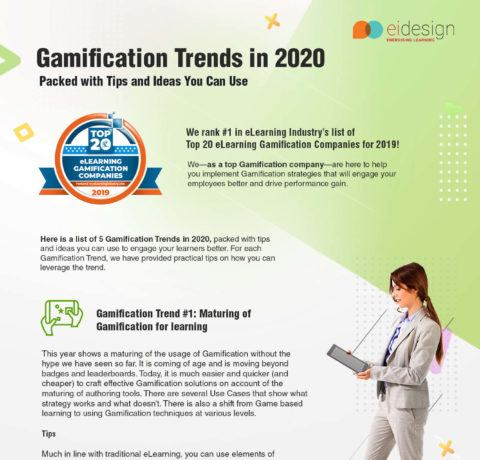The Top Gamification Stats and Facts For 2015 Infographic
There are a myriad of convincing arguments in favor of adopting a gamification strategy. However, numbers often speak louder than words, especially when those numbers are backed by extensive research studies and surveys. So, let's explore the The Top Gamification Stats and Facts For 2015 Infographic that will give you ample reason to integrate eLearning games into your next eLearning course or training event.
To find out more please visit: The Top Gamification Statistics And Facts For 2015 You Need To Know
The Gamification Market
1. Expected Market Growth.
The market growth of gamification [3] is expected to reach the $1,707 billion in 2015 and the 5,500 billion in 2018. The biggest market is expected to be the North America, followed by Europe.
2. Current And Expected Revenue.
eLearning gamification is not just beneficial for the learner, but can lead to a significant boost in revenue for professionals who choose to focus on eLearning game design and development. A research conducted by Ambient Insight [1] shows that:
- Game- based global revenue in 2012 was $1,548 million, and with a five year CAGR of 8.3%, this revenue is expected to reach $2,309 million in 2017.
- Simulation-based global revenue in 2012 was $2,364 million, and with a five year CAGR of 23%, this revenue is expected to reach $6,648 million in 2017
- The total global revenue in the learning games market in 2012 was $3,912 million and with a five year CAGR of 18%, this revenue is expected to reach $8,958 million in 2017.
3. Expected Demand.
Based on the findings of a survey conducted by TalentLMS [4], 79% of the participants (both corporate learners and university students) said that they would be more productive and motivated if their learning environment was more like a game. Gartner Research has predicted that by the year 2015, more than 50% of corporate processes will be gamified [2]. In addition, gamification will be the primary mechanism that 40% of the Global 1000 organizations will employ to improve their business operations [3].
Learners’ Preferences And Effectiveness
1. Motivation.
A survey conducted by TalentLMS [4], showed that
- 89% of those surveyed stated that a point system would boost their engagement
- 82% are in favor of multiple difficulty levels and explorable content.
- 62% stated that they would be motivated to learn if leaderboards were involved and they had the opportunity to compete with other colleagues.
2. Most And Least Preferred Gamification Techniques.
According to the findings of a TalentLMS survey [4], there are certain gamification techniques that learners like most and therefore, eLearning professionals can perceive them as more effective.
Among the most preferred ones are:
- progressing to different levels (30%),
- points/scores (27%),
- real time feedback on performance (26%),
- progress bars (25%)
- activity feeds (24%).
The least preferred gamification techniques seem to include:
- competition with friends (13%),
- virtual gifts (12%)
- being part of a story/ narrative (11%)
- avatars (3%),
- virtual currencies (2%).
3. Effectiveness On Adults.
According to a study conducted by the University of Colorado [2] on the impact of simulations and games in adult learners, participants in gamified eLearning experiences scored
- 14% higher in skill-based-knowledge assessments,
- 11% higher in terms of factual-knowldege
- 9% increase in retention rate.
Games aren't just for entertainment in the world of eLearning. In fact, judging by the numbers, they are an effective and powerful tool that enriches eLearning experiences for users of all ages and in all niches.
Want to know more about how gamification reshapes learning? In the free eBook "How Gamification Reshapes Learning" 23 gamification experts offer tips and advice on the applications of games in eLearning, as well as a discussion of how gamification has impacted the eLearning Industry. This eBook will help you to create a gamification strategy that boosts learner engagement and motivation in your eLearning deliverables. In addition, you are more than welcome to read the article, The Science and the Benefits of Gamification in eLearning that highlights some of the most notable benefits of using gamification in your eLearning design.
References
- The 2012-2017 Worldwide Game-based Learning and Simulation-based Markets
- Gamification, Games, and Learning: What Managers and Practitioners Need to Know.
- Digital Games Revolutionizing Workplace Learning? A Discussion on the Merits of Game-based Learning in the Workplace
- Gamification Survey Results, survey by TalentLMS







You can adjust your cookie preferences here.